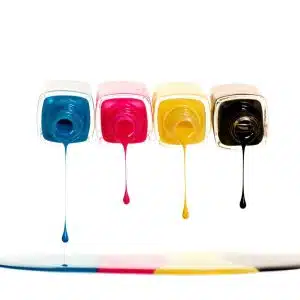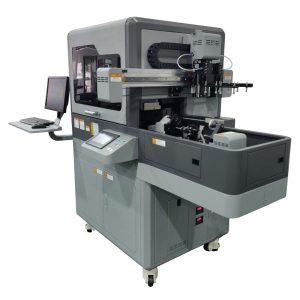Pretreatment methods
Learn more about glass pre-treatment methods, inkjet primers for glass, stainless steel, coated metals, dense plastics, LSE plastics, polypropylene plastics, carbon fiber, tile, plastics, and more.
How does a printed substrate maintain its colors after many washes, scrubs and abrasions? How do you get pad printing inks to adhere onto a product full of impurities? These are some of the questions printers and decorators ask themselves. Most of the time, they give up. At best they find us–Boston Industrial Solutions, the experts of decorating and printing onto any substrate. For this reason, many customers reach out to us to the impossible to print products. To date, we’ve been able to resolve 99% of all printing products. In this article, we will try and discuss methods that you can use to make adhere onto hard to print products. Products that have impurities. From plastics, to glass, to metals, to silicone.
Glass Pretreatment methods
How do you make ink to permanently adhere onto printed glass and maintain its vibrant colors after multi-washes, scrubs and abrasions? Glass substrates have imperfections and impurities. Printing onto an un-treated glass there is a high likely hood that the ink will not permanently adhere onto the glass. Ink will not adhere onto glass for as long as the glass substrate has imperfections. You can try pad printing inks, screen printing inks, inkjet printing inks or UV curable pad printing inks or spraying inks, the out come will be the same–no adhesion. To achieve optimal ink adhesion on glass, the impurities have to be removed. This is called pre-treated. Pre-treatment is the process of removing impurities from a substrate so that ink can adhere onto it.
There are several methods of pre-treating glass. The most commong pre-treatment methods for glass include flame, Pyrosil®, plasma, and wipe pre-treatments. Most of these methods work to clean the printing surface of the substrate and hence increase printing ink bonding capabilities onto glass substrates.
When printing on glass or metal substrates, UV curable inkjet inks or UV curable pad printing inks or UV curable screen printing inks are a great option. UV inks or UV LED inks area great options because they improve ink adhesion and increase ink abrasion resistance. What determines how well the ink will bond onto a substrate?
Multiple factors determine how well an ink will adhere onto a substrate. Some of these include surface energy, dyne levels, and coating requirements. Most UV pad printing inks have a surface tension between 25-35 dynes. Definition of Dyne:Wikipidia defines dyne as a unit of force, when acting on a mass of one gram, increases its velocity by one centimeter per second every second along the direction that it acts. In formula terms 1 dyn = 1 g. cm/s2 = 10−5 kg..
Based on our research and practical experiments the surface tension of ink should be about 9.755 dynes less than the surface energy of the substrate for glass or metal or plastic. High-quality prints to these substrates occur on a product are acheived at 40 dyne. That is a surface energy between 30 and 50 dyne. With that in mind we:
- Formulate our inks to adhere onto substrates at this energy level
- We have made wiping solutions that increase or reduce the energy level of a substrate to achieve this engergy level.
How to measure dyen and guarantee ink adhesion onto substrates
The Dyne of a substrate can be measured using a dyne pen. You need a dyne Pens or dyne test Fluids to test the a substrate and determine if the pad printing ink or screen printing ink or UV inkjet ink or UV pad printing ink will work onto your substrate. This will enable you to guarantee ink adhesion onto a substrate.
To improve and guarantee adhesion, there are several pre-treatment options you can use depending on a substrate. In this article we are going to examine several options available to guarantee ink adheres perfectly on to substrates.
Primer Wipes for pad printing inks
Primer wipes and primer wipe are a basic pretreatment methods for glass, plastics, and metals. The main benefits of these pre-treament methods is cost. No machines or additional supplies needed. Simply wet a lint-free towel with primer, wipe the substrate, let it dry and print your substrate. Not all primers are created equally. Our 1-primer will work on multiple substrates. We offer several primers.
- PP Primer – this it the ultimate primer for plastics.
- G Primer – Formulated as a one part inkjet primers for glass
- M Primer – Inkjet primers for stainless steel, coated metals, dense plastic, and carbon fiber
All in all these primer do not guarantee 100% ink adhesion. So we move onto our next pre-treatment method, flame pretreament.
Flame Pretreatment
Flame pretreatment method for glass is an industry standard for pad printing, screen printing and UV printing. The glass surface undergoes several stages prior to pre-treatment. The first step is to wipe the glass down with a lint free towel or with isopropyl alcohol wipe. The next step is flame treatment. The flame treating uses the oxidation layer of the flame to increase the surface energy of the glass or metal. This in turn increases substrate wet-ability. What is wettability? Wettability is the degree to which a liquid spreads on the surface of a solid.
To achieve maximum ink adhesion, spreading is necessary. Flame pre-treament affects the angle of contact between the liquid and substrate. The contact angle affects how the ink spreads. For the ink to spread evenly onto the substrate it needs to be at 0-degrees. It is at this angle that pad printing ink wetting occurs. Low number angles indicate better ink wetting. Source: http://soft-matter.seas.harvard.edu/index.php/Contact_angle
Pyrosil® Pretreatment
Pyrosil® has been the leading flame pretreatment method for cold end glass coating and glass decorators. Pyrosil® is added into the flame treatment in order to solve issues relating to cold end coating, contamination and mold that flame treatment alone cannot.
What is cold end glass coating?
Cold end glass coating is a layer of thin film applied to glass bottles during the manufacturing process. There is also a “hot end” coating. Hot end coating is applied just before annealing and it used to help with cold end coating application, which is applied after annealing.
What is it for?
Cold end coatings is a protective film that gives the glass a smooth surface that resists scratching and other surface damage. This coating is applied to prevent glass from scratching or sticking together as glass bottles and jars travel through conveyors and scuff against each other during transit.
Back to flame pre-treatment. Flame pre-treatment works by altering the chemical composition of the substrate to have a higher surface energy for improved wettability. This leads to improved bonding of pad printing inks and UV inks to the glass surface. Pyrosil® kits are available for industrial use, as well as large self-standing flame treatment machines which can be equipped with a Pyrosil® system. Automatic systems can treat multiple glass products per minute. The Pyrosil® treatment creates a silane coating on the surface of the glass. This increases the surface tension of the metal or glass substrate, making it more receptive to bonding, especially for UV inks and pad printing inks. Note, Pyrosil® is not compliant with California Prop 65. When using it, it needs to be probably vented, otherwise, in the long term it can cause respiration issues.
Plasma Pretreatment
Plasma pre-treatment is am expensive way to clean substrates and prepare them for pad printing, screen printing or uv inkjet printing. Plasma has an extremely high energy level. Plasma treatment breaks down the structure of unwanted debris and dust. This cause them to fall off from the substrate. The plasma process is highly effective and environmentally friendly. Over time, advancement in plasma technology has increased it’s in popularity. In addition, it has decrease its cost. Inks bond easier onto the substrate after pre-treatment. The resulting image is more vibrant and resistant to abrasion.
Wipe pre-treament for Silicone
In order to ensure ink adhesion to multiple substrates, we have developed SCW-A® and SCW-M® Pre-Treatment for silicone substrates. These solutions prepare silicone substrates, glass substrates, and metal substrates for the pad printing, screen printing, spraying, or inkjet printing processes. These pre-treatment methods eliminates any debris or other impurities on the glass, metal, or silicone that may inhibit silicone ink adhesion. SCW-A® wipe allows for a stronger adhesion between the ink and silicone surfaces than any other product on the market. This is the solution used by all silicone swim cap printers world wide. We formulated this system to be fast and efficient. You can pre-treat up to 15 to 20 items per minute. Unlike some other methods, the SCW-A® and SCW-A® wipes are completely safe for the operator and the environment. Additionally, SCW-A® and SCW-A® wipe solutions are FDA 21 CFR 17.300, CPSIA and California Prop 65 compliant. After the pre-treatment process, silicone rubber items, plastics items, and glassware items can withstand 250+ residential and up to 650 industrial dish washes without the ink de-laminating[1]. Silicone inks adhesion is permanent onto the substrate.
Conclusion
When it comes to decorating glass, silicone swim caps, and some plastics, pre-treatment is necessary in order to achieve an overall high-quality print. Depending on the substrate and application, we have a primer or a wipe that is right for your application. Boston Industrial Solutions-a global leader in printing inks has formulated a wide variety of primers for silicone rubber, metals, plastics, and more. The goal has been to enable printers to print and decorate on substrates that were not possible before.
Our promise and guarantee is that once you pre-treat your substrate with our product, our inks (EK for pad printing on plastics, MG for pad printing on glass, SE for pad printing on silicone, and ST for soft touch) will 100% adhere onto your specific substrate. Our wipes and primers also increase print durability, improve ink abrasion resistance, and print color vibrancy. For glass, pre-treatment methods prepare glassware to withstand the necessary adhesion tests required by the ASTM.
[1] Depending on type of glassware used, detergent, and temperature of wash










